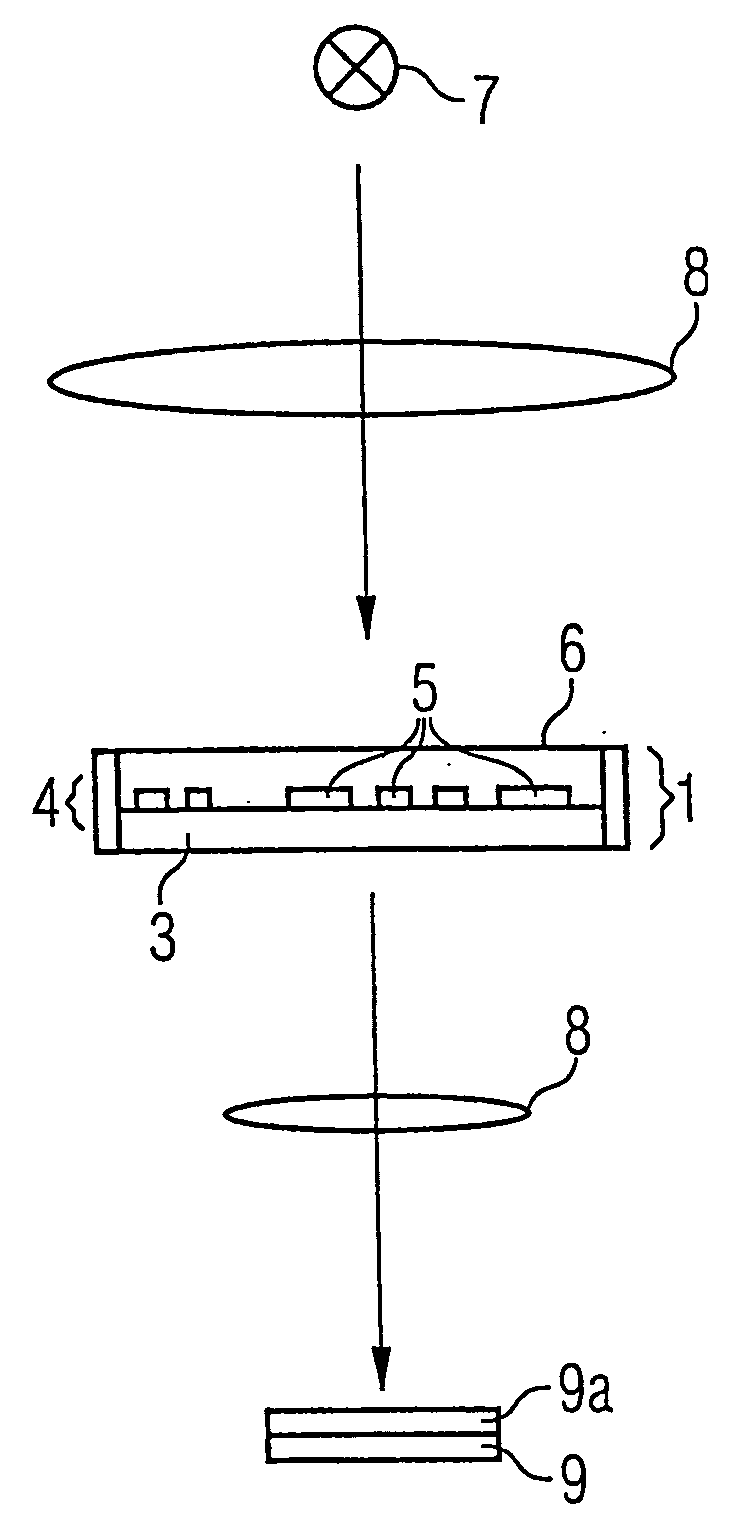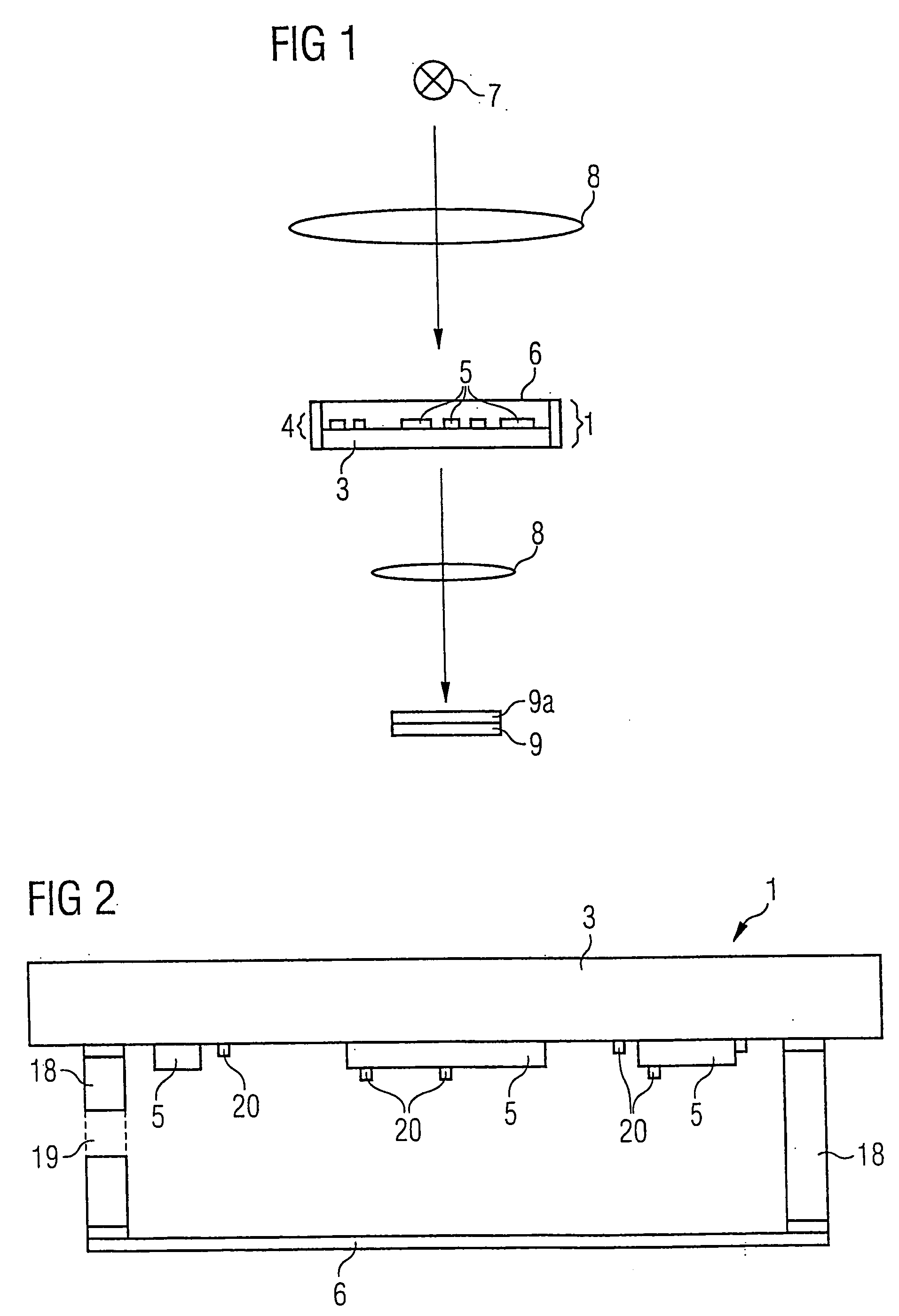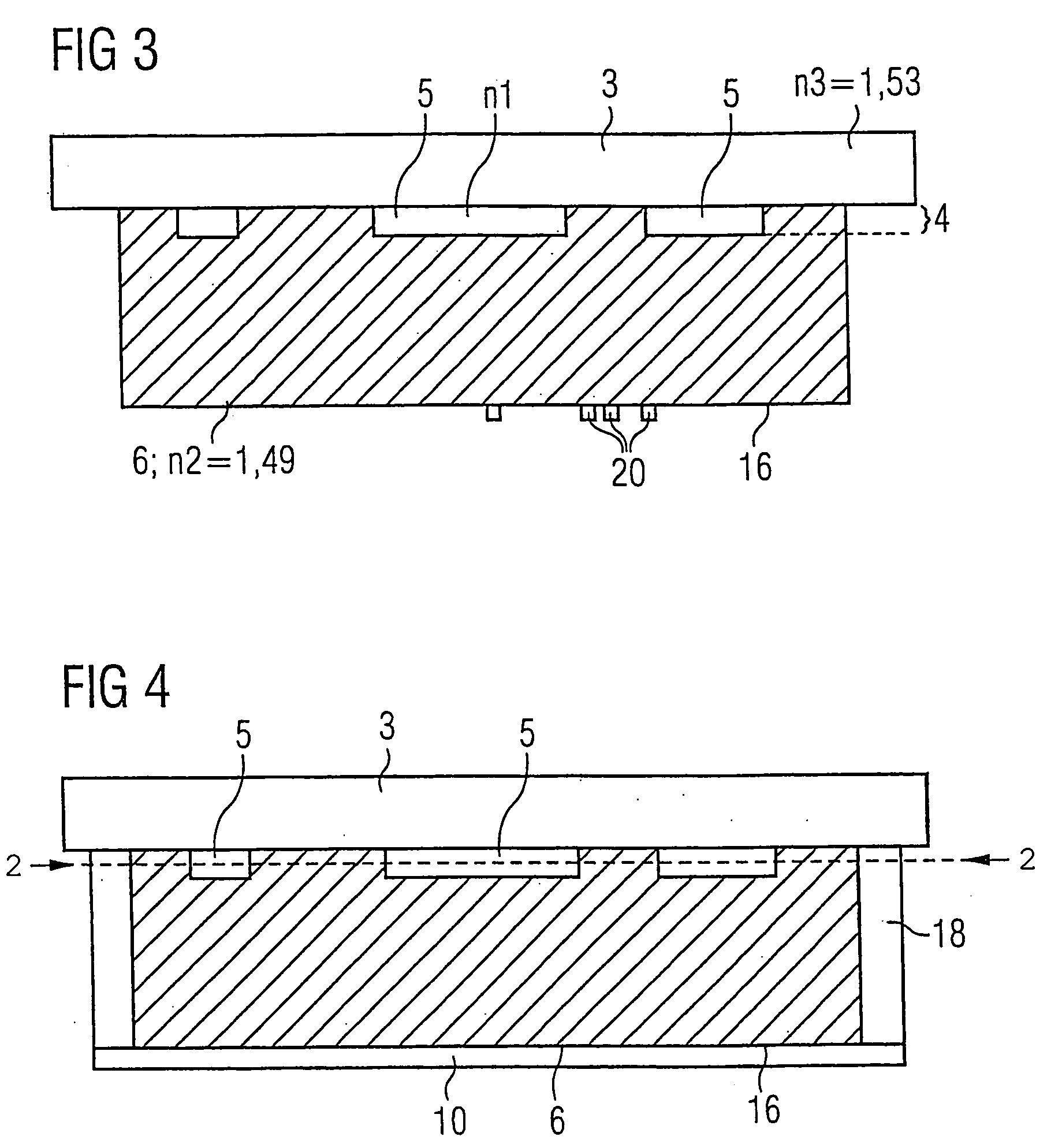Lithographic mask, and method for covering a mask layer
a mask and mask layer technology, applied in the field of lithographic masks, can solve the problems of reducing the size of the structure imaged on the exposed semiconductor wafer, affecting and fabricated defects, so as to ensure the quality of optical imaging and prevent the impurity particles. , the effect of high quality
- Summary
- Abstract
- Description
- Claims
- Application Information
AI Technical Summary
Benefits of technology
Problems solved by technology
Method used
Image
Examples
Embodiment Construction
[0050] Preferred embodiments of the invention will now be described with the figures. Referring first to in FIG. 1 electromagnetic radiation from a light source 7 passes through an optical system 8 and through a mask 1 onto a substrate 9, which is to be exposed by lithography or onto a layer 9a, which is to be exposed on the substrate 9. The system is used to transfer a structure of the mask 1 onto the substrate 9. Regions of the exposed substrate, which correspond to the structures 5 of the patterned mask layer 6 are shadowed and can be removed or retained selectively with respect to exposed regions. As an alternative to the case of a transmission mask illustrated in FIG. 1, the mask 1 may also be a reflection mask. In both cases, the mask substrate 3 prevents impurity particles from forming or being deposited from just one side. From the other side, it is customary to provide a pellicle, which is held as a protective layer 6 at a distance from the patterned mask layer 4 and preven...
PUM
| Property | Measurement | Unit |
|---|---|---|
| refractive index | aaaaa | aaaaa |
| refractive index | aaaaa | aaaaa |
| refractive index | aaaaa | aaaaa |
Abstract
Description
Claims
Application Information
 Login to View More
Login to View More - R&D
- Intellectual Property
- Life Sciences
- Materials
- Tech Scout
- Unparalleled Data Quality
- Higher Quality Content
- 60% Fewer Hallucinations
Browse by: Latest US Patents, China's latest patents, Technical Efficacy Thesaurus, Application Domain, Technology Topic, Popular Technical Reports.
© 2025 PatSnap. All rights reserved.Legal|Privacy policy|Modern Slavery Act Transparency Statement|Sitemap|About US| Contact US: help@patsnap.com



